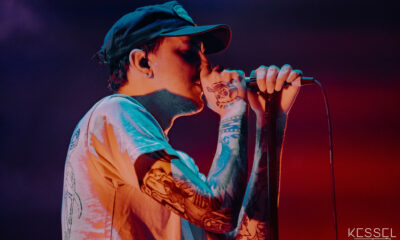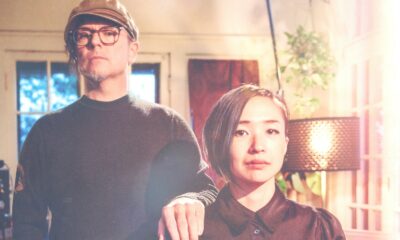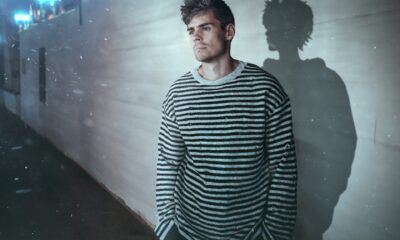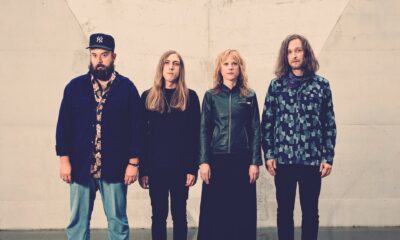Alternative/Rock
UnCovered: Nathan Leigh Explains How He Developed His ‘House on Stilts’ EP Artwork
Nathan Leigh, frontman for his band Nathan Leigh & The Crisis Actors, joins us for an UnCovered interview to discuss the memorable cover artwork for the new EP, ‘House on Stilts.’

A man never short on ambition, Nathan Leigh is ready to reemerge with his latest musical endeavour. On November 19th, Nathan Leigh & The Crisis Actors will release their latest EP House on Stilts, the follow-up to last year’s full-length release, Myths, Conspiracy Theories, and Other Stuff I Made Up To Sound Interesting. More than just a piece of music or a set of songs, the EP will be accompanied by a stop-motion animated short film which Leigh has been at work on for now an entire decade. There are many themes at play on the EP, with Leigh describing the four-song set as a story about feeling as though the world is so broken that it will never be fixed, and the longing for wanting to escape that’s connected to those feelings.
If Leigh has proven anything over the course of his lengthy career, it’s that he is so much more than just a songwriter. He has composed music for over 300 plays that have run across many major cities in the United States and has also served as a playwright for certain productions. Since 2010, he has also worked as a music columnist, interviewer, and mixtape producer for Afropunk. Simply put, there is always something creative going on when it comes to this man.
As previously stated, House on Stilts is a lot more than just an album, with its multimedia focus. What’s particularly striking about it is its memorable cover artwork. To discuss the artwork and his feelings on album art in general, we caught up with Leigh for a brand new edition of UnCovered.
What was the inspiration for the album’s cover artwork?
Nathan Leigh: “Early on in the pandemic I had gotten really into computer-generated artwork. I’ve always had an interest in randomness in art, and tend to use randomizing algorithms in small ways in my music. My favourite part of making art is when a collaborator surprises you with something you’d never have imagined that’s so much better than what you were thinking. And even though it’s running off my code and within parameters I’ve programmed, there’s something wonderful about the way AI and simple bots can surprise you and hold a funhouse mirror up to a world you understand. Even the “wrong” answers show you things you wouldn’t have otherwise seen.
“House On Stilts began as a soundtrack to a stop motion short film I’ve been working on since 2011, so it was important that the artwork connect directly to the film. I’ve been living with the animation for House On Stilts for ten years now, and kept bashing my head against how to distill 10,000 still animation frames into an album cover. Finally, I realized it was an issue of perspective, so I handed the job off to my robots.”
Tell us more about how you created the artwork and the process involved.
“I call the artist Autonomous Photobot #2. I should probably come up with a better name. I’m open to suggestions if you or your readers have any. Photobot #1 is a robot I made to help with animation that’s sort of a cross between a dolly track, lighting rig, and a motor-controlled gripping arm. I Frankensteined it out of random parts I had in my studio and a 100-year-old train set that I inherited from my grandfather. Stop motion is all about infinitesimally small movements over long periods of time, and there are certain types of sequences that get prohibitively difficult to film with human hands. A tiny slip of the finger can ruin hours of work, so having something I could program tiny movements opened up some possibilities I’d struggled with in the past. After I got Photobot #1 up and running, I wanted to try to build something that could be a little more autonomous and also weather-proof to help with time-lapse sequences, so I designed Photobot #2.”
Can you tell us more about how you used these robots in the making of the artwork?
“The robot is stationary and solar-powered with a small LiFePO4 battery that can keep it running through about three days of low sunlight. It has atmospheric sensors and a camera lens rigged up to a Raspberry Pi Zero and communicates back with a server in my house a few times a day. I position it somewhere that seems like it might be interesting and then let it do its thing. Sometimes there’s a pleasant surprise when it catches a unique detail, and sometimes something I thought would be rad doesn’t work out. Trying to film mushrooms growing after the rain just ended up with Photobot #2 getting covered in mud.
“For the album art, I knew I wanted the main character from the animation to be featured, so I placed the bird in front of Photobot #2 and let it go for the day. The results are then fed into a bash script that plugs it into a template and chooses font colours based on the dominant colours of the image. Then I sorted through about 200 options and picked the one that jumped out at me most.”
Have you ever purchased an album solely because of its album artwork? Did the music live up to the artwork?
“Oh, absolutely I have. More when I was a kid than now, though I did first check out Indigo de Souza because her artwork is amazing. But in middle school, I discovered The Grateful Dead when I was going through a bit of a metal phase and I thought all those skeletons looked so badass. I was very surprised when it turned out to be poetic Americana with complex shaggy harmonies. The irony is that my metal phase was pretty short-lived once I got into punk rock, and my appreciation for The Dead’s studio work, I never really got a taste for their live stuff, has only grown over the years.”
With the increasing popularity of digital music, most fans view artwork as just pixels on a screen. Why did you feel the artwork was important?
“I was the kind of kid who had album covers and band posters on every available inch of his walls. I used to love sitting down, putting on an album, and getting lost in the booklet. I’ve always tried to make sure my physical albums have some sort of similar immersive visual experience. Since I’m not touring until the pandemic is truly over, I’m trying to find ways to make that immersive visual experience exist digitally.”
When people look at the album cover artwork, what do you want them to see/think?
“I think there’s a longing quality to the image the Photobot took. I was surprised how a non-sentient photographer could take a picture of an inanimate object and evoke the sense of isolation and searching for connection that the album and film are about, but again, being surprised is the best part of making art.”
Have any favourite music-related visual artists?
“I subscribe to the belief that Banksy is actually one of the guys in Massive Attack, and I love Massive Attack. Does that count?”
What are your thoughts and/or the pros and cons about digital art versus non-digital?
“The digital realm has opened up a lot of possibilities for artists. There are tools and ways to connect to listeners and other artists that were unfathomable when I was cutting demos on a four-track and stealing photocopies from Staples for cover art. But to some degree, the streaming age was marketed as this opportunity to level the playing field and democratize art. And if anything, the opposite has happened. Most algorithms are designed to direct people not to something that might surprise them and broaden their horizons, but to the safest option to keep them engaged and driving ad revenue.
“I can speak from personal experience that writing an algorithm that can surprise you isn’t a challenge, and it’s delightful when it does, in the way that a great DJ dropping a surprising track in their set is delightful. But it takes the willingness to risk that you might also get something someone won’t like. The margins in digital art are so small, that everyone’s too scared to take that kind of risk. Even though very few people only like one genre of music or one medium of art, music and art are more siloed into microgenres and niche audiences than ever. I don’t blame the use of algorithms, I blame the people who are writing them.
“We think of AI as sentient because sci-fi has trained us to, but all these algorithms are is a set of instructions and parameters that are preprogrammed by humans. The AI may be performing the labour of curation, but it’s doing so within a lane that’s as wide or narrow as someone chose to make it. We just need more imaginative algorithms from less risk-averse gatekeepers. And ideally less powerful gatekeepers while we’re at it.”
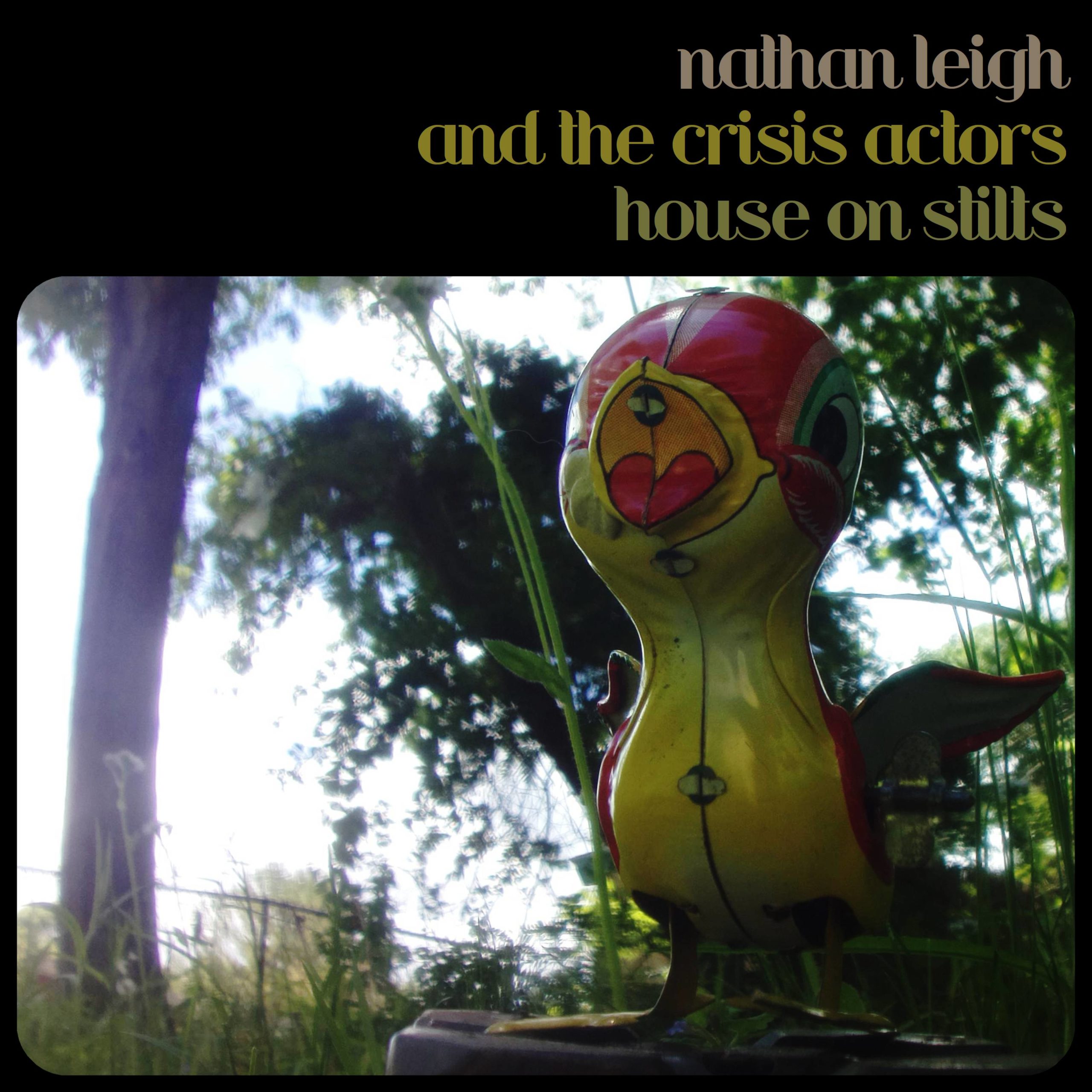
Artwork for the album ‘House on Stilts’ by Nathan Leigh
What do you think are some of the cover artworks that have translated best/worst onto t-shirts and other merch?
“If you need to know the band to know why a shirt is dope then it’s not going to work. I know I’ve been guilty of that with some of my merch in the past. A lot of artists in the CD era took this really ironic approach to artwork like ‘we’re too cool to make proper album art’ and so some of my favourite albums actually make pretty bad t-shirts. I think a lot of the best album-art-to-shirt designs came from before that era because they were designing for a 12’ x 12’ record rather than a 4’ x 4’ CD sleeve. So they were designing for a canvas that’s already about the same size as a t-shirt silkscreen.
“I don’t think it’s a coincidence you still see people wearing t-shirts of album covers that were released in the ‘80s and earlier. Now we’re designing for something to stand out at 100 pixels, and it’s just a very different canvas. There are definitely still artists who are making rad album art that also makes rad t-shirts. The Muslims and The Linda Lindas both have some great merch. It’s just not as surefire a transition from one medium to the other.”
How do you think the album art will affect the listener’s perception of your album?
“I hope it will give them the suggestion of the character of the animated film, which is ultimately about a misfit struggling to find their place in the world. I’ve tried to make the EP something that can exist on its own too, so I hope it’ll pique someone’s curiosity to watch the film.”
Is the art for this album related to any of your previous album cover artwork?
“House On Stilts is tangential to my band’s most recent full-length Myths, Conspiracy Theories, and Other Stuff I Made Up To Sound Interesting. I wanted them to feel tied in a small way, so they both use the same shape frame as an outline.”
What’s your favourite thing about this album cover?
“Most of my coding and automation projects have been a process of experimentation with a lot of trial and error involved. Heavy on the error. Photobot #2 is the first thing like this I’ve designed from scratch and had it work more or less exactly as I planned. I’m pretty proud of that.”
Did you use the same methods for any art for the album besides the cover?
“The video for my single of ‘No Poetry’ is half filmed by Autonomous Photobot #2. That should be dropping in a few months.”
Do you have a favourite album cover of all time?
“Probably You’re Living All Over Me by Dinosaur Jr. It’s strange, visceral, alienating, and kinetic in all the ways that the album is. I feel like if you gave someone that image and asked them to record an album inspired by it, they’d hand in that exact recording.”
-

 Music1 week ago
Music1 week agoTake That (w/ Olly Murs) Kick Off Four-Night Leeds Stint with Hit-Laden Spectacular [Photos]
-

 Alternative/Rock2 days ago
Alternative/Rock2 days agoThe V13 Fix #011 w/ Microwave, Full Of Hell, Cold Years and more
-

 Alternative/Rock1 week ago
Alternative/Rock1 week agoThe V13 Fix #010 w/ High on Fire, NOFX, My Dying Bride and more
-

 Features1 week ago
Features1 week agoTour Diary: Gen & The Degenerates Party Their Way Across America
-

 Culture1 week ago
Culture1 week agoDan Carter & George Miller Chat Foodinati Live, Heavy Metal Charities and Pre-Gig Meals
-

 Music1 week ago
Music1 week agoReclusive Producer Stumbleine Premieres Beat-Driven New Single “Cinderhaze”
-
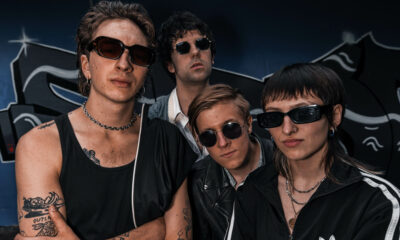
 Indie2 days ago
Indie2 days agoDeadset Premiere Music Video for Addiction-Inspired “Heavy Eyes” Single
-

 Alternative/Rock2 weeks ago
Alternative/Rock2 weeks agoThree Lefts and a Right Premiere Their Guitar-Driven Single “Lovulator”


